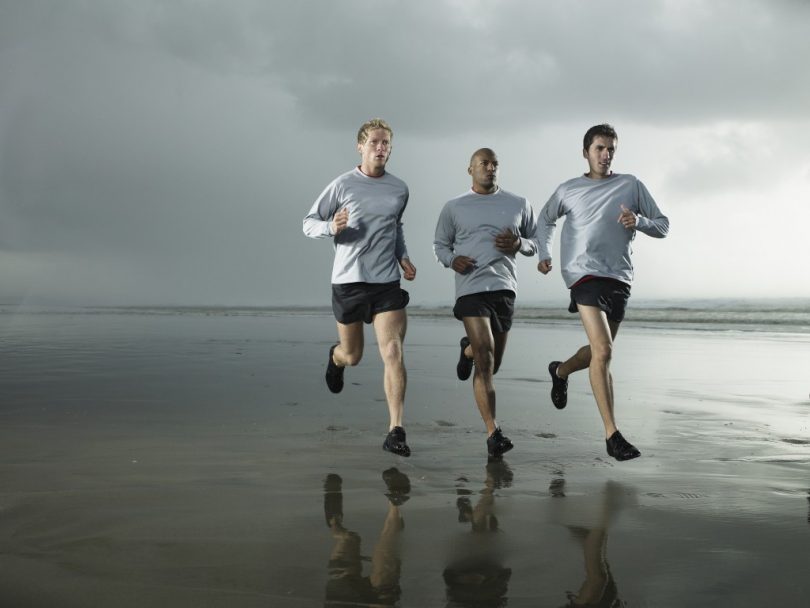By Rick Platt —
Whenever I’d go to a high school or college reunion, or just see an old friend for the first time in years, they’d always ask me first whether I was still running, and when I answered “Of course,” they’d comment, “What about your knees, don’t they wear out?”
I’ve been running and racing for more than 45 years, and my knees are totally fine, along with my hips, ankles and feet. I’ve yet to have a stress fracture or broken bone. I’ve run an estimated 120,000 miles in training (almost five times around the world!), and completed approximately 1,250 races and more than 2,000 interval or speed workouts. Yet my knees show no problems of wear-and-tear. There may be an occasional minor bout of “runner’s knee” (chondromalacia), but that is quickly resolved by quadriceps-strengthening exercises such as workouts on a stair-stepping machine, which strengthen the muscles supporting the knee without any impact. I’ve experienced some soft-tissue injuries, but Pilates keeps me training daily and racing weekly—just four days off since April.
What are the secrets to running and racing healthy for a lifetime? I’ve learned a number of principles of training through the years that will work for any runner, whether you’re 65 or 25, an experienced racer or starting out for the first time.
Platt’s Principles
• Run as many miles as possible on soft surfaces, whether grass, crushed gravel, dirt trails, or even the local all-weather high school track. Asphalt is better than concrete sidewalks or roads.
• The two “G’s” are critical—“gentle” and “gradual.” Warm-ups before every workout or race should start out at a walking pace, and gently, gradually increase the pace, while including breaks for various loosening-up exercises. It’s best to start your warm-up solo, so not to be pushed beyond your optimum by another runner’s pace.
• It’s a mistake to do all running at the same slow pace. After a proper warm-up, vary the pace, stretching out leg muscles, increasing circulation and building lung power.
• Slowly, gradually increase in mileage or intensity through the weeks, months and years.
• Never stretch a cold muscle. Judicious stretching is effective only after the workout, when muscles are warm and blood is flowing, or after a hot shower.
• Listen to your body, always monitoring the signals of potential injury, and stopping or slowing down whenever needed, and performing a few loosening-up exercises that will keep a minor ache or pain from becoming an actual injury.
• If you run daily, incorporate two weekly “recovery days” into your training, running gently at least two to three minutes per mile slower than your regular training pace, and half the mileage or less of your regular training distance. These “recovery” days are usually best the day after the race, or the day after an interval workout. Although many runners do Sunday long runs the day after hard Saturday races, that routine is risky.
• Avoid all drugs, whether painkillers or anti-inflammatory drugs, steroids or cortisone. They can mask the warning signals from the body and lead to long-term injuries. If you need drugs to run, then you’re doing something wrong.
• Hydrate thoroughly daily, whether with water, fruit juices or sports drinks, and in the hour before you run, saturating the body. Replenish your liquids immediately after your workouts.
• Remember to wear track pants or sweatpants whenever the temperature is below 65 degrees, especially for the warm-up phase.
•Work on muscle weaknesses and imbalances, whether through Pilates, aerobics, cross training, or a stretching/strengthening program.
Rick Platt has been president and newsletter editor of the Colonial Road Runners since 1994. The founder Run Fast Promotions, he is a consultant for major running events and offers personal running coaching. His lifetime bests include a 2:23:55 marathon and a 51:50 ten-miler.

